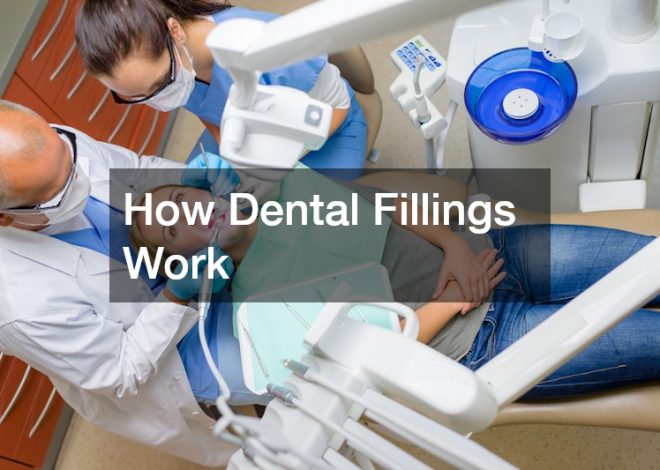
Veneers Explained What You Need to Know

Introduction
Dental veneers have become one of the most sought-after cosmetic dental treatments for people who want to achieve a flawless, confident smile. These thin, custom-made shells are designed to cover the front surface of teeth, instantly transforming their color, shape, size, or length. Whether you’re dealing with stubborn stains that don’t respond to whitening, small gaps between teeth, or chips and irregular shapes, veneers offer a versatile solution that blends both beauty and function.
The rise in popularity of veneers can be attributed to advancements in dental technology, materials, and techniques that make them more natural-looking, longer-lasting, and comfortable than ever before. Modern veneers are tailored to suit your unique facial features, smile line, and personal preferences, ensuring results that look stunning yet completely natural.
Unlike some cosmetic procedures that take months to show results, veneers can deliver a dramatic smile transformation in just a few visits, making them ideal for people who want quick yet high-quality improvements. Beyond aesthetics, veneers can also provide a protective layer for teeth, helping reduce wear and restoring a smoother bite surface.
In this guide, we’ll walk you through what veneers are, the process of getting them, benefits and risks, costs, and how to maintain them for years of confident smiling.
What Are Dental Veneers?
Definition and Types
Dental veneers are thin, wafer-like coverings bonded to the front surface of teeth to improve appearance. They mask imperfections like discoloration, chips, gaps, and minor misalignments. The two primary types are porcelain veneers and composite resin veneers. Porcelain veneers are fabricated in a dental lab and known for their strength and lifelike translucency. Composite veneers are applied and sculpted directly onto the teeth by the dentist, usually in a single visit.
Materials Used in Veneers
-
Porcelain: A ceramic material that mimics natural enamel’s light reflection, durability, and texture. It resists stains and lasts longer but requires more preparation and cost.
-
Composite Resin: A tooth-colored filling material applied in layers, shaped, and hardened by light. It is less expensive and quicker but stains more easily and may need more frequent repairs.
Comparative Benefits of Porcelain vs Composite Veneers
Porcelain veneers generally provide superior aesthetics with better color stability and lifespans typically reaching 10-15 years or more. Composite veneers are an affordable alternative requiring less tooth reduction and usually last 5-7 years but may chip or discolor faster. Choosing between them depends on budget, cosmetic goals, and dental condition.
Process of Installing Veneers
-
Consultation & Assessment: Your dentist evaluates oral health, discusses goals, and determines candidacy.
-
Preparation: A small amount of enamel is removed to make space (mostly for porcelain veneers).
-
Impressions: Molds of your teeth are taken for custom veneer fabrication (for porcelain).
-
Temporary Veneers: Sometimes placed while waiting for lab-made veneers.
-
Bonding: Veneers are precisely fitted, bonded with dental cement, and hardened with a curing light.
-
Final Adjustments: Your bite and fit are checked, and polishing is done for a natural appearance.
Longevity and Durability
With proper care, porcelain veneers can last over a decade, while composite veneers typically last several years but may need touch-ups. Their durability depends on oral hygiene, avoiding excessive force (e.g., nail-biting), and routine dental visits.
Are Dental Veneers Right for Me?
Candidate Criteria for Veneers
Ideal candidates have healthy teeth and gums, sufficient enamel for bonding, and desire cosmetic improvement or minor corrections. Veneers are suitable for addressing:
-
Discolored or stained teeth that don’t respond to whitening
-
Chipped, worn, or broken teeth
-
Small gaps or teeth slightly out of alignment
-
Slightly misshapen or uneven teeth
Assessing Your Dental Health
Veneers require an oral environment free of decay, gum disease, or severe bite problems because underlying issues must be treated first to avoid failures.
Veneers for Cosmetic Enhancement
Many choose veneers primarily for aesthetic reasons—to achieve a white, uniform, and confident smile when other options like whitening or orthodontics are less suitable or too lengthy.
Veneers for Protective Reasons
In some cases, veneers can protect teeth weakened by enamel loss, erosion, or minor fractures, reinforcing strength while improving appearance.
Risks and Limitations
-
Irreversibility: Some enamel removal is permanent, especially with porcelain.
-
Sensitivity: Temporary sensitivity post-installation is common due to enamel preparation.
-
Damage: Veneers can chip or crack from trauma or high bite pressure.
-
Color Matching: Veneers don’t whiten with teeth, so mismatches can occur if natural teeth change shade.
-
Not Suitable for Extensive Damage: Severely decayed or misaligned teeth may require crowns or orthodontics.
Cost and Affordability of Veneers
Estimate Cost Range
Porcelain veneers generally range from $925 to $2,500 per tooth, reflecting lab work and materials. Composite veneers cost $250 to $1,500 per tooth depending on complexity and location.
Factors Influencing the Cost
-
Dentist’s expertise and geographic location
-
Number of veneers needed
-
Choice of material and fabrication method
-
Additional procedures such as gum contouring or tooth preparation
-
Insurance coverage availability (usually cosmetic procedures are not covered)
Insurance and Coverage Options
Most dental insurance plans exclude veneers since they are elective cosmetic treatments. However, some coverage may apply if veneers are needed for protective reasons. Discuss with your insurer beforehand.
Comparing Costs: Veneers vs Other Dental Procedures
Veneers can be more cost-effective than repeated whitening treatments or orthodontics for immediate smile enhancement. However, crowns or bonding may be cheaper alternatives for severe damage.
Long-Term Cost Effectiveness
While initial costs are higher, porcelain veneers’ durability and stain resistance can make them a worthwhile long-term investment if maintained properly.
Maintenance and Care of Veneers
Daily Care Tips
-
Brush twice daily with a non-abrasive toothpaste and soft toothbrush.
-
Floss gently to avoid border damage.
-
Avoid biting hard objects like ice or pens.
-
Limit staining foods and drinks like coffee, tea, and red wine.
Regular Dental Visits
Maintain twice-yearly check-ups for professional cleaning and inspections to catch potential issues early.
- Handling Chips or Damages
Small chips may be repaired with composite bonding. Major damage may require veneer replacement. - Avoiding Common Pitfalls
Refrain from using teeth as tools and wear a night guard if you grind your teeth. - Lifespan of Veneers with Proper Care
Porcelain veneers can last 10-15 years while composites last 5-7 years with good hygiene and protective habits. - Short-Term and Long-Term Effects of Wearing Veneers
- Immediate Post-Installation Effects
You might experience mild sensitivity or gum discomfort that usually resolves within weeks. - Adjustment Period and Sensitivity
Slight changes in bite sensation and tooth sensitivity are common initially but typically adapt. - Impact on Natural Teeth
Properly bonded veneers protect underlying teeth but enamel removal is permanent and requires lifelong maintenance.
Long-Term Dental Health Implications
- Good oral hygiene keeps gums healthy around veneers; poor care risks gum disease and decay at margins.
- Visual Aesthetics Over Time
Porcelain veneers typically maintain their shine and color; composites may discolor and require periodic polish or replacement.
Conclusion
Veneers can be life-changing — not just in how your smile looks, but in how you carry yourself every day. For many, they’re more than a cosmetic investment; they’re a confidence boost that can impact personal, social, and professional interactions. By understanding the different types of veneers, the installation process, associated costs, and long-term care requirements, you can approach the decision with clarity and realistic expectations.
Before moving forward, it’s essential to have an open discussion with your dentist about your goals, health of your natural teeth, and budget. A personalized approach ensures that your veneers blend seamlessly with your smile and complement your features while remaining functional and comfortable.
Remember, veneers are not maintenance-free — their longevity and beauty depend on proper dental hygiene, mindful eating habits, and regular professional check-ups. Investing time in care will not only maintain their aesthetic appeal but also protect the underlying teeth and gums.
Ultimately, veneers are a powerful tool in modern dentistry’s cosmetic toolkit — offering a balance of artistic design and dental science. With the right planning and care, you can enjoy a radiant, natural-looking smile for many years, turning your vision of the “perfect smile” into a lasting reality.



